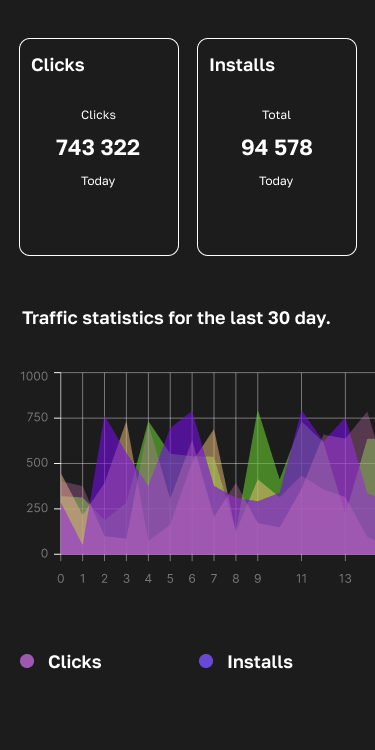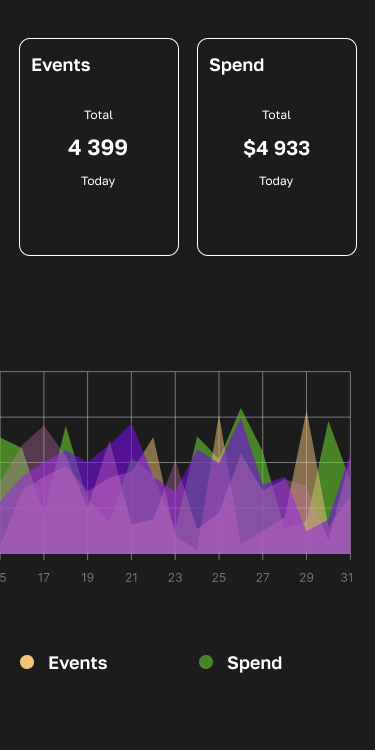Marketing budgets are still haemorrhaging cash to fake clicks, spoofed installs and hijacked last-touch attributions: analysts now peg total digital-ad losses at $88 bn in 2023 and a projected $172 bn by 2028 — and in-app spend is set to account for more than half of that gap. App-install fraud alone exposed advertisers to $17 bn last year, even after real-time blocking. Below is a fresh playbook distilled from the classic “attribution-theft blind-spot” exposed by Business of Apps and the newest AI-driven counter-measures surfacing in 2025.
Why is this important now
- Attribution theft is an inside job. When UA and product teams chase different KPIs, fraudsters slip into the gaps: stolen last-clicks let one team “hit target” while the company pays twice for the same user.
- Fraud gets smarter with AI. GAN-generated device profiles now mimic dwell time, scroll depth and CTIT so convincingly that legacy rules engines miss 60% of attacks.
- In-app is the soft under-belly. Juniper projects in-app ads to reach $479 bn by 2028 and account for 52% of all ad-fraud losses without tougher controls.
1. 2025 fraud playbook
1.1 Classic tactics, new skins
| Vector | 2019 name-tag | 2025 twist |
| Click spam | Background click floods | Hyper-engagement bots tuned by reinforcement learning to dodge CTIT filters |
| Click injection | Installer-watcher apps | Android 15 apps that spoof INSTALL_FINISH within sub-second windows |
| SDK spoofing | Replay attacks | Man in the middle kits that randomise GAID-less device tokens to fool Privacy Sandbox audits |
1.2 AI arms-race
- Fraud rings use GANs and large-language agents to spin up deep-fake user journeys and scale bot-farms across cloud GPUs.
- MMPs respond with graph-ML & anomaly-detection that flags outlier cohorts in real time, cutting detection lag 8×.
2. Cost of inaction
- 22% of every digital-ad dollar was siphoned off by invalid traffic in 2023.
- Average search-ad fraud rate hit 11.5% last year, forcing many brands to slash SEM budgets.
- Without corrective action, global UA CAC models will overstate ROI by 25-30% in high-growth verticals (gaming, fintech).
3. Five-point defense blueprint
- Unify incentives & data pipes
- Merge UA, BI and product dashboards so every stakeholder sees the same clean cohort data — the cure to the “rob-Peter-pay-Paul” blind-spot.
- Merge UA, BI and product dashboards so every stakeholder sees the same clean cohort data — the cure to the “rob-Peter-pay-Paul” blind-spot.
- Adopt proactive MMP shielding
- Solutions like Adjust’s distribution-modeling and SDK signature reject fake installs before attribution, preserving data integrity.
- Layer AI on top of deterministic signals
- Feed privacy-safe signals (store referrer, SKAN, AAK) into graph-ML models that re-score traffic every few minutes. Early pilots cut post-attribution claw-backs by 60%.
- Feed privacy-safe signals (store referrer, SKAN, AAK) into graph-ML models that re-score traffic every few minutes. Early pilots cut post-attribution claw-backs by 60%.
- Isolate “at-risk” channels quickly
- Use Juniper’s loss benchmarks to ring-fence in-app and video inventory with higher bid-floors and extra verification.
- Run quarterly red-team audits
- Simulate bot farms and fake-click scenarios to stress-test filters — already mandated by several TAG & MRC guidelines updated in 2025.
Turn fraud into a Forcing Function
Attribution fraud will not vanish, but it can be out-innovated. Teams that treat measurement, mitigation and marketing as one loop are already reclaiming double-digit budget share and sharpening their growth forecasts. The takeaway for H2 2025 is clear: make fraud prevention a product KPI, not a line-item cost, and the ROI gap between clean and contaminated traffic will widen decisively in your favour.










